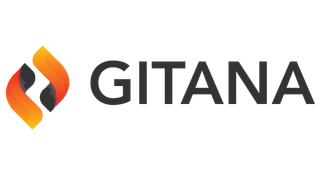Found 592 results for "gitana 4.0 developers api resources branch post-repositories-repositoryid-branches-create-start"
The search executed in 0.0028 seconds. That's fast.

|
Gitana 3.2 / Guide / Guide / General / Geolocation ServicesDocumentation Reference Geolocation services by Cloud CMS: look up geographic data using IP or coordinates seamlessly. (Gitana 3.2)
Score: 0.925
|

|
Gitana 3.2 / Guide / Guide / Integrations / Azure / Blob StorageDocumentation Reference Optimize cloud storage with Azure Blob for massive, unstructured data. Perfect for streaming, documents, and distributed access. (Gitana 3.2)
Score: 0.925
|

|
Gitana 4.0 / Content Engine / General / Geolocation ServicesDocumentation Reference Geolocation services from Cloud CMS provide IP address and coordinate-based location lookup. (Gitana 4.0)
Score: 0.925
|

|
Gitana 4.0 / Content Engine / Integrations / Azure / Blob StorageDocumentation Reference Optimize your cloud storage with Azure Blob, perfect for scalable data, media streaming, and distributed access. (Gitana 4.0)
Score: 0.925
|

|
Gitana 3.2 / Guide / Guide / User Interface / MultilingualDocumentation Reference Enable multilingual support on Cloud CMS to manage translations seamlessly, ensuring content is accessible in multiple languages. (Gitana 3.2)
Score: 0.9229
|

|
Gitana 3.2 / Guide / Guide / Templates / Workflow TaskDocumentation Reference Detailed overview of workflow tasks including ID, title, description, start and completion times, context, data, and URLs. (Gitana 3.2)
Score: 0.893
|

|
Gitana 4.0 / Content Engine / Templates / Workflow TaskDocumentation Reference Discover how to manage workflow tasks with detailed properties, timestamps, assignments, and project context. (Gitana 4.0)
Score: 0.893
|

|
Directed and Undirected AssociationsSupport Article Explore directed and undirected associations in Cloud CMS API, enhancing node relationships in powerful, flexible ways. (Support 1.0)
Score: 0.893
|

|
Sync from one environment to anotherSupport Article Effortlessly sync environments and transfer data in Cloud CMS with our versatile and efficient transfer system. (Support 1.0)
Score: 0.893
|

|
Gitana 4.0 / User Interface / User Interface / MultilingualDocumentation Reference Easily manage multilingual content with Cloud CMS, supporting translations and locales for master documents. (Gitana 4.0)
Score: 0.891
|

|
Gitana 3.2 / Guide / Guide / Application Server / Web Content ManagementDocumentation Reference Optimize your web content delivery with Cloud CMS's powerful Web Content Management and cache solutions. (Gitana 3.2)
Score: 0.8904
|

|
Gitana 4.0 / Developers / Application Server / Web Content ManagementDocumentation Reference Streamline your web content with Cloud CMS, enabling effortless editing, caching, and publishing for dynamic websites. (Gitana 4.0)
Score: 0.8904
|

|
Gitana 3.2 / Guide / Guide / Application Server / Installation / Module InstallationDocumentation Reference Learn to set up and extend a custom Node.js app using the Cloud CMS Application Server as a module. (Gitana 3.2)
Score: 0.8704
|

|
Gitana 4.0 / Developers / Application Server / Installation / Module InstallationDocumentation Reference Deploy and extend Cloud CMS Application Server as a custom Node.js app with powerful configuration options. (Gitana 4.0)
Score: 0.8704
|

|
Gitana 3.2 / Guide / Guide / AttachmentsDocumentation Reference Store and manage binary assets seamlessly with Cloud CMS, supporting JSON objects with multiple attachments. (Gitana 3.2)
Score: 0.8613
|

|
Gitana 4.0 / Content Engine / Nodes / AttachmentsDocumentation Reference Explore Cloud CMS's robust attachment support for storing and managing binary assets within JSON objects. (Gitana 4.0)
Score: 0.8613
|

|
Citations with Generative AIBlog Post Enhance your AI content with traceable citations and vectorized search, ensuring accuracy and trust in your business solutions.
Score: 0.8582
|

|
Gitana 4.0 / Reference / Types / AssociationDocumentation Reference Explore the role of Associations in defining relationships between nodes, customizable types, and indexed searchability. (Gitana 4.0)
Score: 0.8582
|

|
Gitana 3.2 / Guide / Guide / Application Server / Tags / @queryOneDocumentation Reference Optimize queries with @queryOne to fetch and display the first result using flexible parameters and sorting options. (Gitana 3.2)
Score: 0.8353
|

|
Gitana 4.0 / Developers / Application Server / Tags / @queryOneDocumentation Reference Learn how to use the @queryOne tag to return and display only the first result from your search query. (Gitana 4.0)
Score: 0.8353
|

|
Gitana 3.2 / Guide / Guide / Single Sign On (SSO) / JWTDocumentation Reference Configure Cloud CMS for JWT and learn how to generate and use JSON Web Tokens for SSO. Simple setup guide included. (Gitana 3.2)
Score: 0.8127
|

|
Gitana 4.0 / Content Engine / Single Sign On (SSO) / JWTDocumentation Reference Learn how to configure Cloud CMS for JWT and Single Sign On with step-by-step examples. (Gitana 4.0)
Score: 0.8127
|

|
Gitana 3.2 / Guide / Guide / Features / ContainerDocumentation Reference Mark nodes as containers in Cloud CMS for path-based navigation without needing a folder structure. (Gitana 3.2)
Score: 0.8091
|

|
Gitana 3.2 / Guide / Guide / Docker / Upgrades / 3.2.73Documentation Reference Upgrade to Cloud CMS 3.2.73 with a focus on ElasticSearch client configuration for optimal performance. (Gitana 3.2)
Score: 0.8091
|

|
Gitana 3.2 / Guide / Guide / Docker / Upgrades / 3.2.74Documentation Reference Upgrade to Cloud CMS 3.2.74 and optimize with new ElasticSearch client; ensure smooth transition with our upgrade tool. (Gitana 3.2)
Score: 0.8091
|
